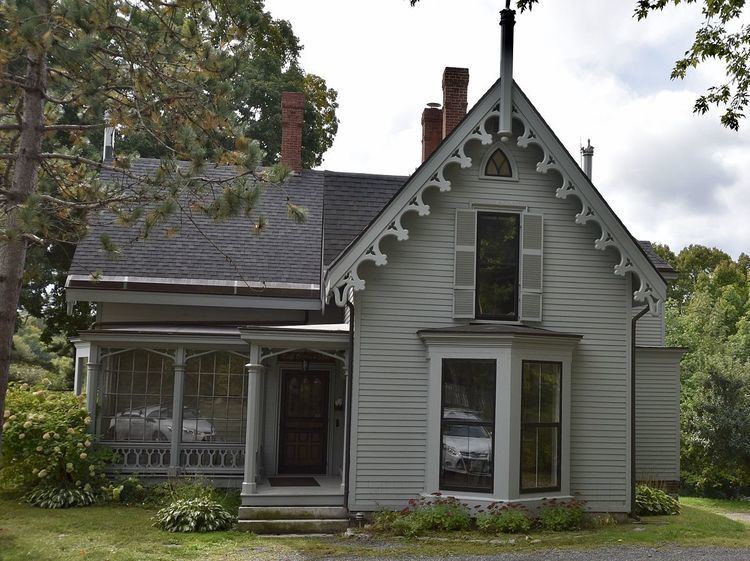Built 1847 (1847) Opened 1847 Added to NRHP 18 June 1973 | NRHP Reference # 73000136 Area 8,000 m² | |
 | ||
Architectural style Gothic Revival architecture Similar Acadia National Park, Collins Center for the Arts, Mount Hope Cemetery, Statues of Paul Bunyan, Bangor Public Library | ||
The Godfrey-Kellogg House is a historic house at 212 Kenduskeag Road in Bangor, Maine, USA. Built in about 1847, it is one of the state's finest and least-altered examples of residential Gothic Revival architecture. It was listed on the National Register of Historic Places in 1973.
Description and history
The Godfrey-Kellog House stands north of downtown Bangor, on the west side of Kenduskeag Road, overlooking Kenduskeag Stream. The house is a rambling 1-1/2 story wood frame structure, with a variety of projecting bays, gable dormers, and other architectural details. Its gables are adorned with jigsawn vergeboard, with the main gables topped by decorative finials. Walls are finished mainly in vertical board-and-batten siding, with some elements clapboarded and others finished in flushboard. Its porches are topped by low jigsawn balustrades. The house sits on 2 acres (0.81 ha) of land, along with a similarly-decorated barn, carriage house, and dog house. The barn and carriage house both have living quarters on the upper level.
The house was built about 1847 for John Godfrey, as a summer residence for his family; its architect is unknown. At the time of its construction, it would have had a view of the Bangor downtown, and of the nearby Morse Mill and covered bridge (neither of which is now standing). The property is notable for its architecture, and its state of preservation, having had relatively little alteration to either the interiors or exteriors of any of the buildings.
